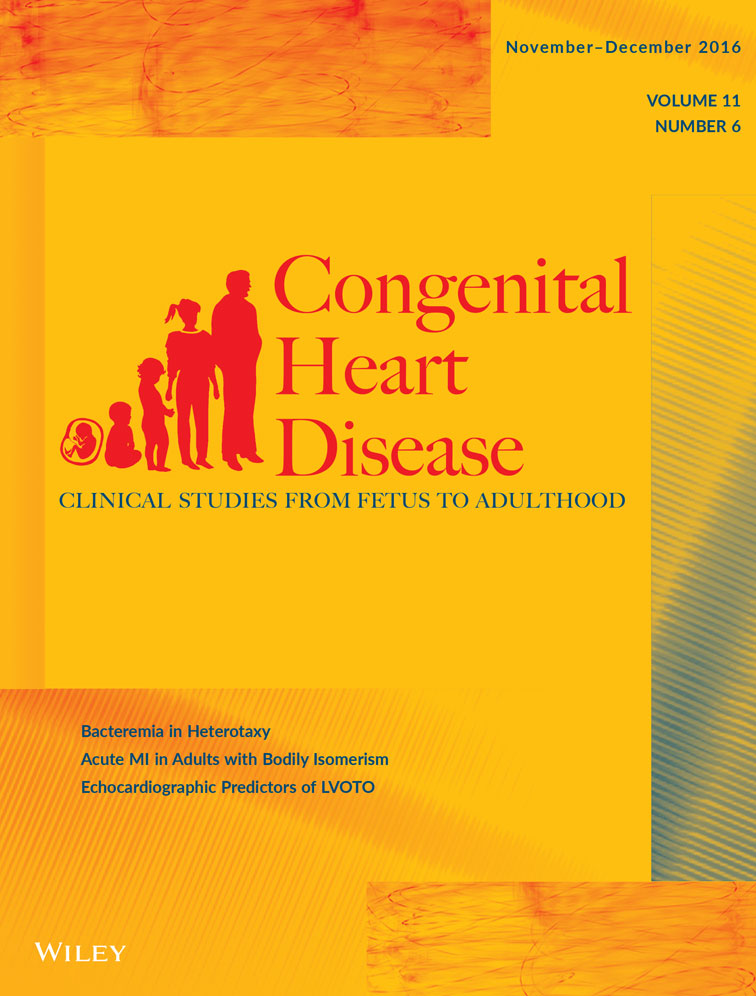Radiation Protocol for Three-Dimensional Rotational Angiography to Limit Procedural Radiation Exposure in the Pediatric Cardiac Catheterization Lab
Conflict of interest: None.
L.M. Haddad involved with the data collection, data analysis, and drafting the manuscript; B.R. Waller involved with data analysis and drafting the manuscript; J. Johnson involved with data analysis and drafting the manuscript; A.F. Choudhri involved with the phantom studies and data analysis; V. McGhee involved with NanoDot handling in the phantom study and manuscript formatting; D. Zurakowski involved with data analysis; A. Kuhls-Gilcrist performed the Monte-Carlo sequencing and derived the conversion factor for ED calculation from DAP; S.K. Sathanandam involved with the conceptualization of the 3DRA protocols, study design for both the phantom and patient study, data analysis and drafting the manuscript.
Abstract
Background
Three-dimensional rotational angiography (3DRA) offers more detailed anatomic information than 2D digital acquisition (2DDA). Concerns over potentially higher contrast and radiation doses have limited its routine use.
Objective
The primary objective of this study was to compare radiation doses required to obtain 3DRA using a customized low dose radiation protocol with 2DDA. The secondary objective was to compare total procedural radiation in pediatric cardiac catheterization procedures utilizing 3DRA to those that do not.
Study Design
Phantom studies were conducted to establish customized 3DRA protocols for radiation reduction. Comparison of 3DRA and non-3DRA procedures in age-, size- and diagnosis-matched controls was performed. Radiation doses were indexed to body surface area (BSA) to account for differing body habitus as validated from the phantom study.
Results
Study (n = 100) and control (n = 100) groups were matched for age (10.2 vs. 9.98 years; P = .239) and BSA (1.23 vs. 1.09 m2; P = .103). The dose area product (DAP) to acquire a 3DRA was similar to a 5 s, 15 frames/second 2DDA (278 vs. 241 cGy/cm2; P = .14). Despite the 3DRA group consisting of more complex interventions, no difference was found in the total procedural Air Kerma and DAP indexed to BSA (244 vs. 249 mGy/m2; P = .79 and 3348 vs. 3176 cGy/cm2/m2; P = .48, respectively). The contrast volume to acquire a 3DRA compared to a 2DDA was greater (1.59 vs. 1.01 mL/kg; P < .001). However, no difference was found for the entire procedure (3.8 vs. 4 mL/kg, P = .494). This could have resulted from the need to obtain multiple 2DDAs to achieve the detail of a single 3DRA (11 vs. 7 per study; P < .001).
Conclusions
When 3DRA, using the proposed protocols is employed, total procedural contrast and radiation doses are comparable with the sole use of biplane cine-angiograms. These protocols may allow for routine use of 3DRA for congenital cardiac catheterizations.




